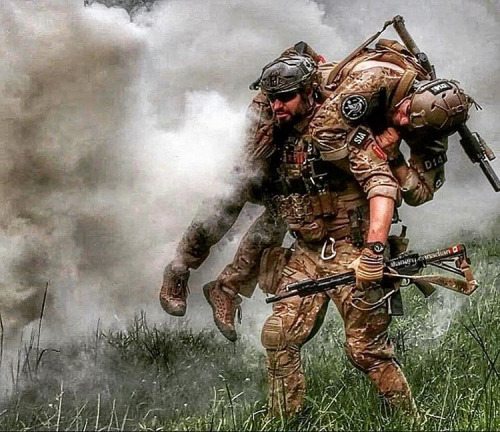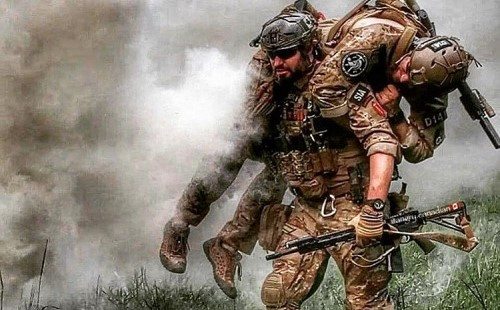
We continue to embrace the application of TEMS to new environments and shifting paradigms as “new”, but the discipline as it stand has a solid foundation. As long as we continue to exclusively approach this as new and uncharted territory, we will hold ourselves back the application and implementation of skills and options which have already been proven, and beg to be integrated into the law enforcement and emergency medical fields.
It has also been traditionally accepted that TEMS is either strictly or primarily a forte of Special Weapons and Tactics (SWAT) teams, and the environments in which they operate. However, “Tactical”, should not and cannot exclusively refer to SWAT, nor is it realistically so.
Consider the complete shift in approach which law enforcement had to undertake since the late 90’s to address the problem of active threat/active shooter. In fact, consider the fact that the majority of law enforcement tactics have so evolved over the last 10-15 years, that most patrol and first responder elements not only function tactically, but have embraced the same training.
My colleagues and I often encourage that all officers attend a basic SWAT course simply because a majority of the skills and tactics taught there are applicable in some shape or form on a daily basis. The dangers encountered in law enforcement, are also encountered daily.
A SWAT mission is typically well planned and approached with a multitude of resources, and it is always perceived as high risk. Yet there is no reason to consider most contacts by everyday law enforcement as anything different. While not all of these contacts are necessarily high risk, the elements of risk, unknowns, and dynamic applications of tactics are always there.
What is not there is the higher degree of resources with which SWAT typically functions. In fact a good friend of mine always asks this question at the beginning of his class: “how many of you are tactical officers.” Usually only the SWAT/ERU/ERT… operators raise their hands.
When he brings a few of the above points to the table, the entire audience comes to realization that every officer is, or at least should be, a tactical officer. It stands to reason then, that TEMS – Tactical EMS, should be a viable resource not just during SWAT call-outs and training, but during more high risk daily operations of a law enforcement agency which may have the luxury of a TEMS resource.
In fact, a patrol-level operation may need TEMS partnership at times more than a SWAT team, and may need such assistance faster than can be delivered with a typical SWAT team activation or call-out.
Consider a high-speed pursuit, where a vehicle crashes and several occupant bail out. One runs into an open field, and two take off toward a subdivision. Patrol has set up a perimeter, is running a track with a K-9, and is about to make contact with 2 of the suspects. Area residents are being contacted, and some may be evacuated. This is a typical patrol-only problem. It’s early March morning, 40F degrees, and the field is surrounded by a marshy area.
During a search for the suspects, traditional EMS will rarely be staged, and may not even be considered until a need arises. We all know that for us, that may be too late. A TEMS team stationed a local fire house, or scanning the police frequency can be made available immediately, and much faster than SWAT can respond. They can stage, and be a ready resource. Aside from the more traditional Tactical Emergency Casualty Care (TECC) functions, they can advocate for the law enforcement on scene no different than during an extended SWAT operation.
Whether it’s to stay hydrated, prevent hypothermia, address allergies, care for the by-standers, or deliver necessary tools and interventions which officers themselves can use, these options should be considered outside of and prior to the problem is assumed by SWAT, if it occurs. Regular utilization of TEMS at such incidents will not only greatly enhance law enforcement’s effectiveness, it will also hone the skills of TEMS members, and build partnership and camaraderie between both services.
A true partnership is a must for TEMS to be an effective resource and to live up to the full service potential. Any short cuts, deliberate omissions or less than a full effort by both sides will end up costing lives. My partners and I are often asked as to who should assume the primary responsibility and liability when a new TEMS team is stood up. Let’s be honest, TEMS primary role is to help and support law enforcement.
The later is who brings “tactical” into the equation, and provides, for the lack of better word, the environment in which TEMS thrives and operates. The primary benefit of TEMS’ function is to law enforcement. As such, the majority of issues (good and bad) encountered during the start-up, implementation and operation of a TEMS team, should be that of the law enforcement agency. It is commendable that many new TEMS operators would spend their own time and money to get where they need to be. I would do the same.
It is beneficial when budgets and manpower can be shared and coordinated. However, some equipment and training can only be secured through the host law enforcement agency, and I would hope that any leader in such agency would accommodate. The same goes for liability. Everything we do has it, and everywhere we go we must prepare for it. But to be shy of it and avoid a life saving measure, policy or change is simply negligent and unprofessional. If the resource exists and question arises, I hope that law enforcement venues can bear the brunt of what it necessary.
TEMS is a paradigm shift which seems to be easier overcome on the EMS side of the public safety. This is due to a number of reasons and nature of functions which make our services unique . We are just now seeing a point where cops believe they deserve and need the skills to be their own best medics, if at least initially. Yet the operability and practical application of TEMS extend to many levels of patrol functions, and tactical problems officers and deputies are challenged with on a daily basis. It’s a team effort which ultimately benefits our communities and the citizens we serve.
Editorial note: approximately 2 months after this article was written for the Special Operations Society, a division of the Wisconsin Emergency Management Services Association, the NTOA issued a positive statement reflecting many of the same points. Both were products of independent experiences and progressive thinking, even though not done in collaboration.
(All images courtesy of our friends at Cagmain.com)





